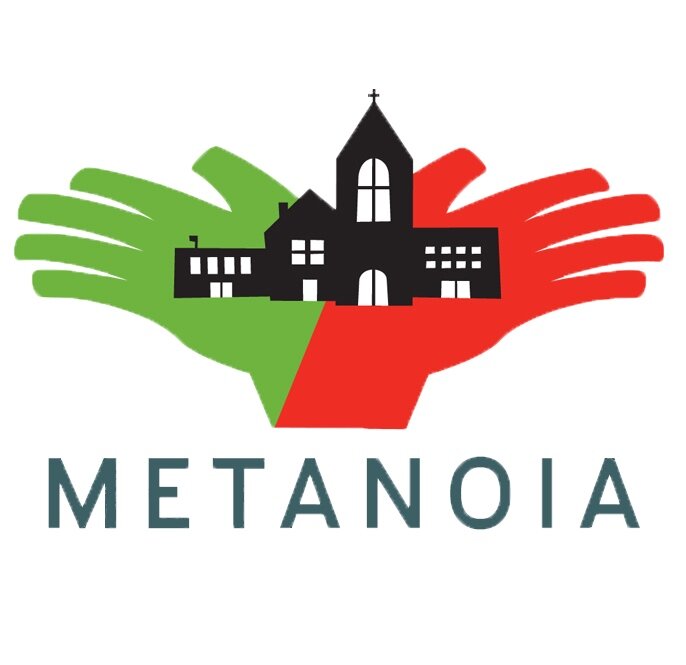FREEDOM?
A few years ago I completed a mural for the nonprofit Just Be You. The mural rests on the exterior of the restaurant, Edmond’s Oast, situated off of Morrison Drive in Charleston. Nestled on top of the image of two Black women are the words “Until Black people are Free, No One Is.” The words complement the background of the mural and inform the overall meaning of the piece.
My working on this mural each day invited frequent stairs of judgment that felt like a disregard for my existence. At one point someone yelled confrontational words toward me out of the window of their passing vehicle
The treatment of myself as I completed the mural begs a question. The sentiment contained in the words of the mural was so obvious to me. However, as I painted and felt these judgments, I had time to wonder, ‘why are they not obvious to so many?’
Why is the idea that Black people are still not free in America even after the last enslaved black person was freed so hard to swallow?
Maybe it is because it challenges the idea that we are “the land of the free.” Our history as a nation stolen from natives, born of immigrants, and built by enslaved people can call into question our often-repeated narratives of nationalism, equality, and freedom for all. My question to those whose judgmental stares and comments came my way as I painted this mural is, “Can we ask what the underlying causes are of any illness whose symptoms persist?
Because so many stories have been left untold to prop up our understanding of the “land of the free” it is difficult for people to fathom that after ending the enslavement of black Africans, new ways were found to continue that bondage.
A few examples,
Jim Crow kept Black people from progressing politically or economically for most of the 20th century
Redlining kept Black people from realizing the most powerful economic tool for the creation of the middle class that this country has ever seen, that of homeownership.
Gerrymandering sought to eliminate the voice of Black people in voting
The School to Prison Pipeline has commodified the poor achievement of Black students to help companies build more prisons at taxpayer's expense
War on Drugs offered stiffer penalties for the crack used in the Black community as compared to the cocaine used in the white community.
Gentrification too often shoves Black people out of communities they have occupied for generations.
Tough on Crime Bills and the Three-Strikes rule which robs the judges of the opportunity to apply wisdom and has created a generation of Black men who our society has reduced to their worst mistake.
Aside from these political and legal, modern-day forms of bondage, the mental emotional and physical toll of daily racism and systemic racism can be traced to the negative health trends of Black Americans.
I wonder if many of those that offered judgment and negative comments as I painted the mural blame Black Americans for some of the social/economic deficits in our community but ignore the constraints that led to it.
Lack of opportunity for homeownership
Historically at the start of the subdivision boom and the launch of the GI Bill, Black Americans were excluded from opportunities for home ownership by both the government and banks.
Economic development
Black people have been racially profiled out of job opportunities, and Black entrepreneurs have limited opportunities to raise investment for their businesses...
Education
Before schools were desegregated Black school goals were underfunded, and now geographically poor and predominantly ethnic schools are still underfunded and understaffed.
The idea here is that after Black people gained freedom, many barriers to success and the pursuit of happiness have been placed in our way. While one group continues to suffer the effects of slavery, others continue to benefit from it to this day. As I walk around Charleston and notice the names and groups of people here that have so much history. I wonder if they have ever considered how much of their wealth or opportunity today, was leveraged by the free labor of enslaved people back then.
I imagine some of those judgmental stares directed at me as I painted the mural were asking "Why do I have to pay for what my ancestors did?” My response... do you still benefit from it?
Until Black people are free, no one is.
Although my mural highlights the whispers that systemic racism hides behind. It also mirrors the strength and power Black people hold while battling and overcoming those same barriers. This idea is portrayed by the image of two powerful women in the foreground with rays of colors radiating behind them. When you take a closer look, you notice that the circumstances that have so often held Black people back are written on the women's clothing. And in each ray of red and yellow behind them, are the names of the victims of police brutality. As we celebrate this year’s Juneteenth let us reflect honestly, on the full and honest history of our nation as well as celebrate the triumphs of African Americans in the face of adversity.
In response to my mural, I also received so many positive reactions. I saw little Black boys and girls stopping and seeing themselves represented in their quickly changing neighborhood. I also met people of many colors appreciating its composition and message. Even as I was sobered by the negative and dismissive comments, on this Juneteenth, I take hope that I can be part of a deep and historic movement that is making sure that truly recognizes that until Black people are free, no one is.



